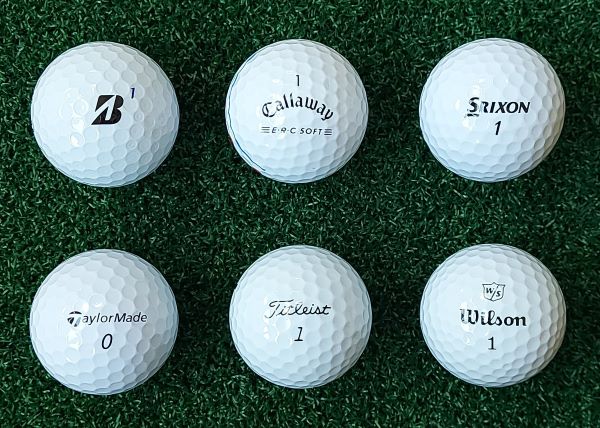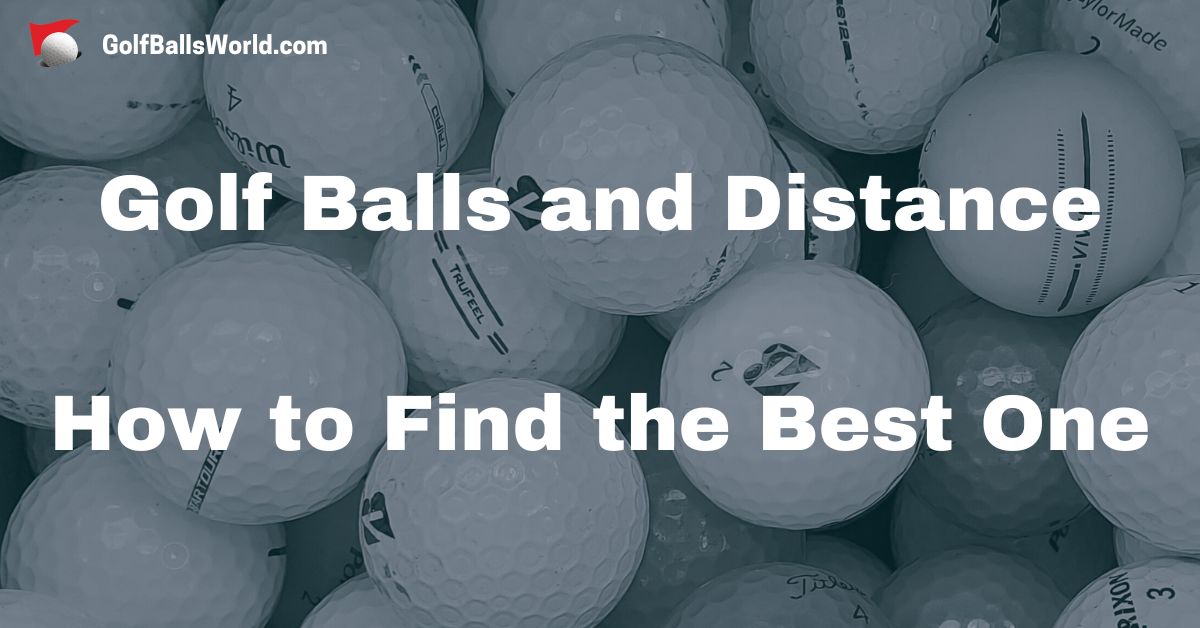Most golfers usually want one thing in specific from the golf ball, distance. There are things as important as distance in the game, but for an average Sunday warrior, distance is key. Since the ancient days of golfing, golf balls, and distance have been closely related. This has been especially the case since the 90s when the golf ball technology started rapidly advancing.
However, all the advancements in reaching new distances might not last much longer. The governing bodies, USGA and The R&A are already planning the rollback in ball distance. So, within the next few years in a way the chase for distance is going to stop, if not reverse. But in the meantime, we should take full advantage of all the balls that are currently available.
The golf ball design and construction influence performance, that is a fact. Different types of golf balls cater to different needs. Here the focus is on distance and therefore golf balls whose primary objective is to go far. So, let’s go on…
How to Find the Best Ball for Distance?
There is no simple answer to this question. Each golf ball can potentially work differently for each player. The fact is there are golf balls that focus on distance first. And if that is what you are after, you should look there first. However, even among those balls you still need to find the one that satisfies your needs. Some additional testing might be required, but it is worth it to go through that process for the end goal.
Here is an overview of what to pay attention to when searching for the perfect distance ball:
- Construction: This is going to be important as distance balls are usually made of two pieces with an ionomer (surlyn) cover.
- Compression: A typical distance golf ball has a low to medium compression rating.
- Brand: There is no rule here, all major brands have a specific golf ball model built for distance.
- Price: These balls are cheaper than premium golf balls, therefore they won’t set you back a lot.
- Spin: Don’t expect too much short-game spin due to their construction. They are built to have less spin when hit to reach further distances.
Choosing the Right Golf Ball for Your Game
Selecting the right golf ball is a personal decision that can significantly impact your game. It’s about finding a balance between various factors such as your playing style, swing speed, and what you value most – be it distance, control, or feel.
For beginners or those with a slower swing speed, balls designed for extra distance and lower compression might be the best choice. These balls can help compensate for the lower velocity, allowing for longer shots. They are generally more forgiving and can boost your confidence as you see your shots travel further.
Experienced golfers or those with faster swing speeds might prefer high-compression balls that offer more control and a better feel. These balls can provide more feedback on your shots and allow for greater precision, especially around the greens.
It’s also worth experimenting with different brands and models. Each brand has its unique technology and design philosophy, which can subtly change how a ball performs. Don’t hesitate to ask for samples at your local golf store or to buy a sleeve of different types of balls to test on the course.
Understanding Golf Ball Construction
Golf ball construction is a blend of science and technology. At its core, literally and figuratively, lies the golf ball’s heart: the core. Made predominantly from synthetic rubber, the core is the primary source of the ball’s energy. It’s what gives the ball its ‘oomph‘ when hit. A softer core typically means more energy transfer, especially beneficial for those with a slower swing speed as it can aid in achieving greater distance.
The next layer is the cover. Made from materials like urethane or ionomer, the cover impacts the ball’s durability and its feel on contact. Urethane covers are often preferred by advanced players for their softer feel and higher spin rates, aiding in control. In contrast, Ionomer covers are harder, offering more durability and a lower spin, which can be helpful for beginners and high handicappers.
Then there’s the mantle, a layer between the core and the cover. It helps in regulating the energy transfer and spin. Some golf balls have multiple mantle layers, each fine-tuning the balance between distance, spin, and feel. So, when it comes to ball choice it should be the one suited for your specific style of play.
The Role of Compression in Distance
Compression in golf balls is a topic that gets much attention among players. It’s a measure of how much a ball deforms under impact. Imagine it as the ball squishing against the clubface before launching into the air. The compression rating of a ball can range typically from 30 to 100, where a lower number indicates a softer ball.
For players with a slower swing speed, a lower compression ball is often more suitable. It deforms more easily upon impact, creating a larger contact area with the club. This can result in more efficient energy transfer from the club to the ball, potentially leading to greater distance. This is one of the reasons lower-compressed balls work well in colder weather conditions.
On the other hand, high-compression balls are preferred by players with faster swing speeds. They require a stronger impact to compress and can offer more control and a firmer feel. These balls tend to have a higher flight trajectory and can provide a more penetrating flight path, which is beneficial in windy conditions.
In essence, understanding your swing speed and how it relates to ball compression is essential. It’s a fundamental aspect of selecting a golf ball that can help you maximize distance and improve your overall game.

Dimples and Aerodynamics
Dimples are a distinctive feature of golf balls, giving them their unique appearance. But these small indentations are not just for aesthetics. They also play a crucial role in aerodynamics. A golf ball typically has between 300 and 500 dimples, and their design affects how the ball flies through the air.
The science behind it is fascinating. Dimples create a thin layer of air that clings to the ball’s surface, reducing drag. This phenomenon, known as the boundary layer, allows the ball to cut through the air more efficiently, increasing distance. Additionally, dimples help in generating lift. As the ball spins, air pressure on the top decreases, while it increases on the bottom, lifting the ball higher and farther.
Different manufacturers experiment with dimple sizes, shapes, and patterns to optimize aerodynamics. This means that not all golf balls are the same in how they interact with the air. Some dimple designs are intended to reduce the ball’s tendency to hook or slice. Others aim to maximize distance or provide a more stable flight in windy conditions.
Choosing a golf ball with the right dimple design can have a noticeable impact on your game. It can influence the ball’s trajectory, stability, and ultimately, the distance it travels.
Going Beyond Distance
Finding the right golf ball can be a pivotal factor in your game. It can be the last element needed to add those extra yards to your drives. Similarly, it can also make your approach shots more controlled and precise. Remember, it is the only piece of equipment you play with on every hole.
We are lucky to be living in an age with so many golf ball options on the market. Each one of those balls has its perfect customers. Surely, sometimes it is going to take some trial and error to get there. You should not shy away from experimenting with different types and brands.
Different balls can unveil some aspects of your game you were not aware of. In the long run, when you find the right one, your game will evolve. So, take your time in the right golf ball quest, you will know exactly when you find it.
What golf ball do you use to gain more distance? Share below!
Related
- Does More Dimples on a Golf Ball Mean More Distance?
- How High Altitude Affects Golf Balls – Golf Better
- Top Golf Balls for Distance – Behind the Curtain

